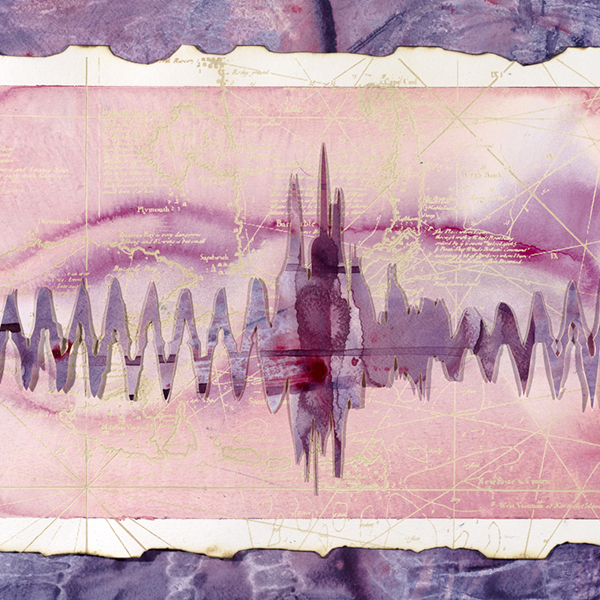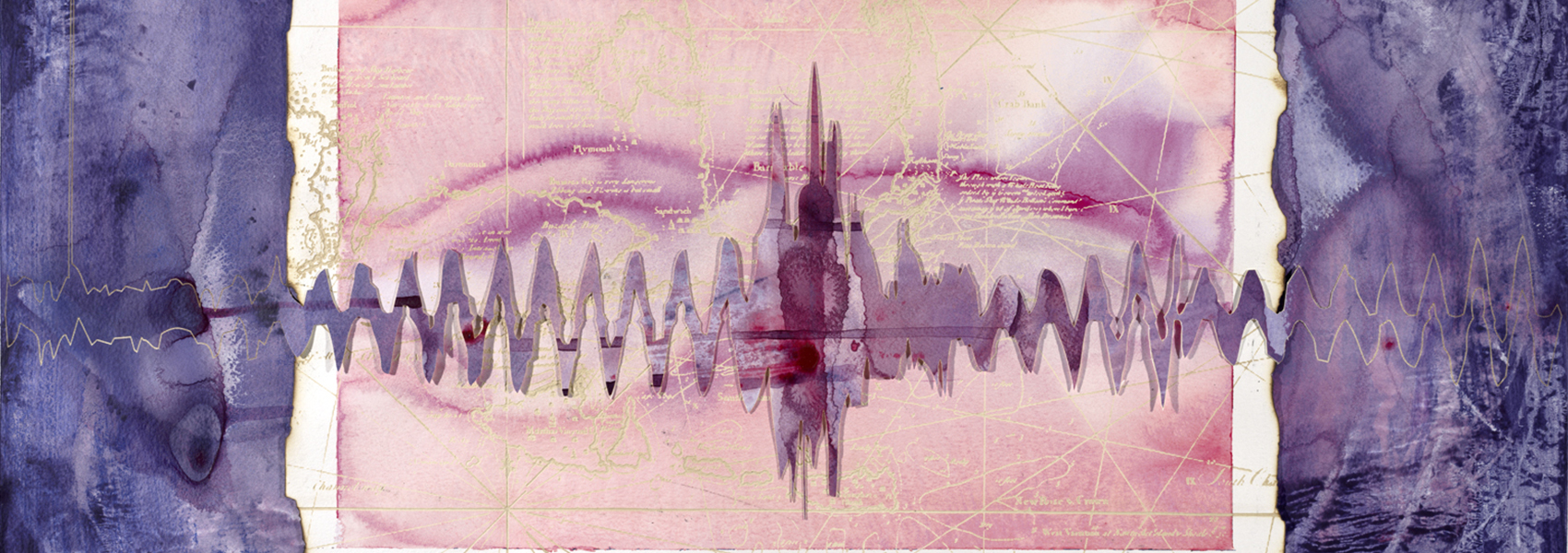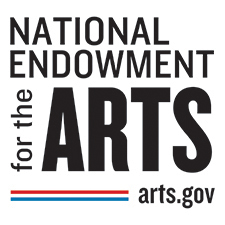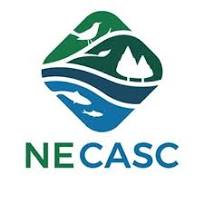BREACH: LOGBOOK 24 | STACCATO
- By Courtney M. Leonard
- September 20 - December 6, 2024
This documentary film by filmmaker Kate Geis follows artist Courtney M. Leonard as she works on her multi-year artist residency and exhibition at the University Museum of Contemporary Art.

In this poignant and thought-provoking exhibition, artist Courtney M. Leonard, a citizen of the Shinnecock Nation of Long Island, explores marine biology, Indigenous food sovereignty, migration, and human environmental impact through visual logbooks that investigate the multiple definitions of the term "breach.”
The result of a multi-year artist residency hosted by the UMCA and the UMass College of Natural Sciences, Leonard’s exhibition spans the spring and fall 2024 semesters. Leonard researched within UMass’ expansive Natural History Collections and selected objects to inspire her body of work.

BREACH: LOGBOOK 24 | STACCATO, includes paintings, sculptures, and video based on the life and kinship ties of Staccato, a North Atlantic Right Whale killed by a ship strike in 1999, whose remains are housed in the UMass collections, and whose rib bone is featured prominently in the exhibition.
“If we’re going to save a whale, how far do we consider the life of that whale?” Leonard asks. “Do we consider the life of that whale when the remains wash ashore? Do we consider the life of that whale when we are then deciding where the remains go and who gets to study those remains, and what collection do those remains stay?”
With Staccato’s story at the heart of the exhibition, Leonard explores themes of Indigenous food sovereignty, migration, marine biology, environmental issues, and the thought-provoking, multifaceted meanings of the word “breach.”
Courtney M. Leonard
earned her Master of Fine Arts in Ceramics from the Rhode Island School of Design. She received a Best of Division in Sculpture from Eiteljorg Indian Market in 2011. Leonard’s work is in the permanent public collections of the United States Art In Embassies, the Crocker Art Museum, the Heard Museum, ASU’s Art Museum and Ceramic Research Center, the Peabody Essex Museum, the Nerman Museum of Contemporary Art, the Museum of the North, the Mystic Seaport Museum, and the Pomona Museum of Art.
BREACH: LOGBOOK 24 | STACCATO was created in partnership with the UMass College of Natural Sciences and is supported by the National Endowment for the Arts, The Office of the Provost, The Class of 1961 Artists’ Residency Fund, the Massachusetts Cultural Council, the UMass Natural History Collections and the UMassFive College Credit Union. Significant research and exhibition contributions came from Kathrine Doyle, staff in the UMass Biology Dept and Vertebrate Collections Manager for the UMass Natural History Collections, Tristram Seidler, Curator of the UMass Herbarium, and Michelle Staudinger, Adjunct Faculty, UMass Department of Environmental Conservation and Associate Faculty, University of Maine, School of Marine Sciences. Emily Volmar, a UMass undergraduate Natural Resource Conservation major, was a summer Art & Science research assistant for this project. Her work and that of UMass Postdoctoral Researcher Amy Teffer was supported by the Northeast Climate Adaptation Science Center.
Spring Artist Talk
On February 21, Leonard was joined by poet Abigail Chabitnoy — professor in the UMass MFA program for poets and writers and member of the Tangirnaq Native Village – for an artist talk in the Frederick C. Tillis Performance Hall.
Leonard began by discussing the inspiration behind BREACH: LOGBOOK 24 | STACCATO, explaining that it is part of a series of artistic projects on whales that she has been working on for ten years.
“When I first started the conversation of BREACH, it was thinking through imposition and thinking through rising waters and coastal erosion tied to Hurricane Sandy,” she said. “What really struck me is we don’t have a lot of options for what land we have left.”
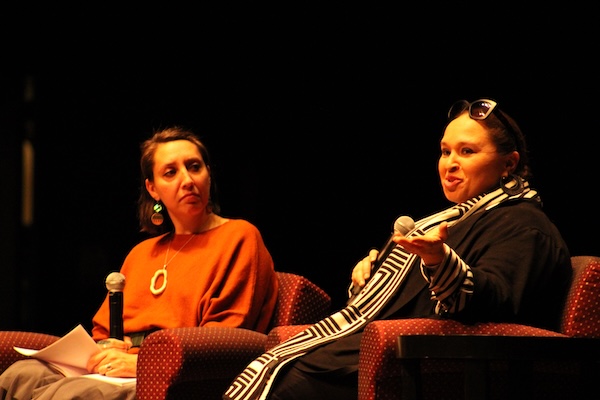
"Staccato has a name, but there are so many whales that don’t have a name. … There are over 565 Indigenous federally recognized nations in this country, and that’s not including unrecognized nations. Not many of you, if I wanted to quiz you tonight, would be able to list all of those 565 nations. So there is a metaphoric layer between indigeneity and the ways that we want to pay attention and want to save something, but we don’t apply that same passion to everything. That was my entry point to coming here.”
The museum’s Associate Director Amanda Herman and UMass Chancellor Javier Reyes also gave remarks.
Herman spoke about the importance of the exhibition’s message.
“It asks us to slow down, pay attention, and listen in. The work expands our knowledge of and connection to the land and water from Courtney’s Shinnecock position and point of view,” she said. “It honors her community and creates space for understanding the intractable climate crisis we’re all in, and offers a way forward.”
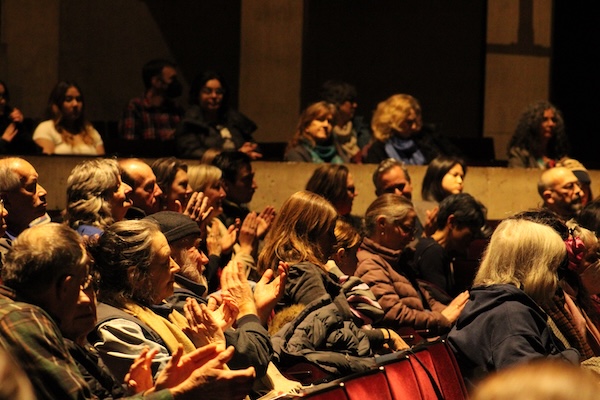
Chancellor Reyes followed, saying, “This exhibit connects us with the natural world in new ways and helps us to better understand the critical and groundbreaking research on climate change that is being conducted at UMass Amherst.”
Audience members were also treated to a poem recited by Chabitnoy, who at the end of their discussion, posed a question at the heart of the exhibition: How do you see the possibility of art and science working together?
Leonard’s response captured the essence of BREACH: LOGBOOK 24 | STACCATO: “Science and art are not separate, it is a way of life. You just have to pay attention... It’s not just the Courtney M. Leonard show, it’s ‘the let’s think about Staccato’ show, and ‘let’s think about each other’ show, and ‘let’s value our worth.’”
Fall Opening Celebration and Concert
On September 19, the museum hosted an opening reception that included a free faculty chamber music concert by the UMass Department of Music & Dance inspired by BREACH: LOGBOOK 24 | STACCATO.
“The idea of community is incredibly strong. It is the bond that ties us to place and roots us, and it is at the heart of the museum’s exhibitions connecting us to nature,” said Visual Arts Director Kristina Durocher at the event. “Courtney M. Leonard’s exhibition BREACH: LOGBOOK 24: STACCATO exploring the life of the right whale Staccato affirms our connection to other species and the sanctity of life.”
The performance, Art + Music: Voice of the Whale was curated by Ayano Kataoka and Steven Beck and featured Ayano Kataoka on percussion/marimba; Steven Beck on piano; Cobus du Toit on flute; and Edward Arron on cello.
Art and Science Convening
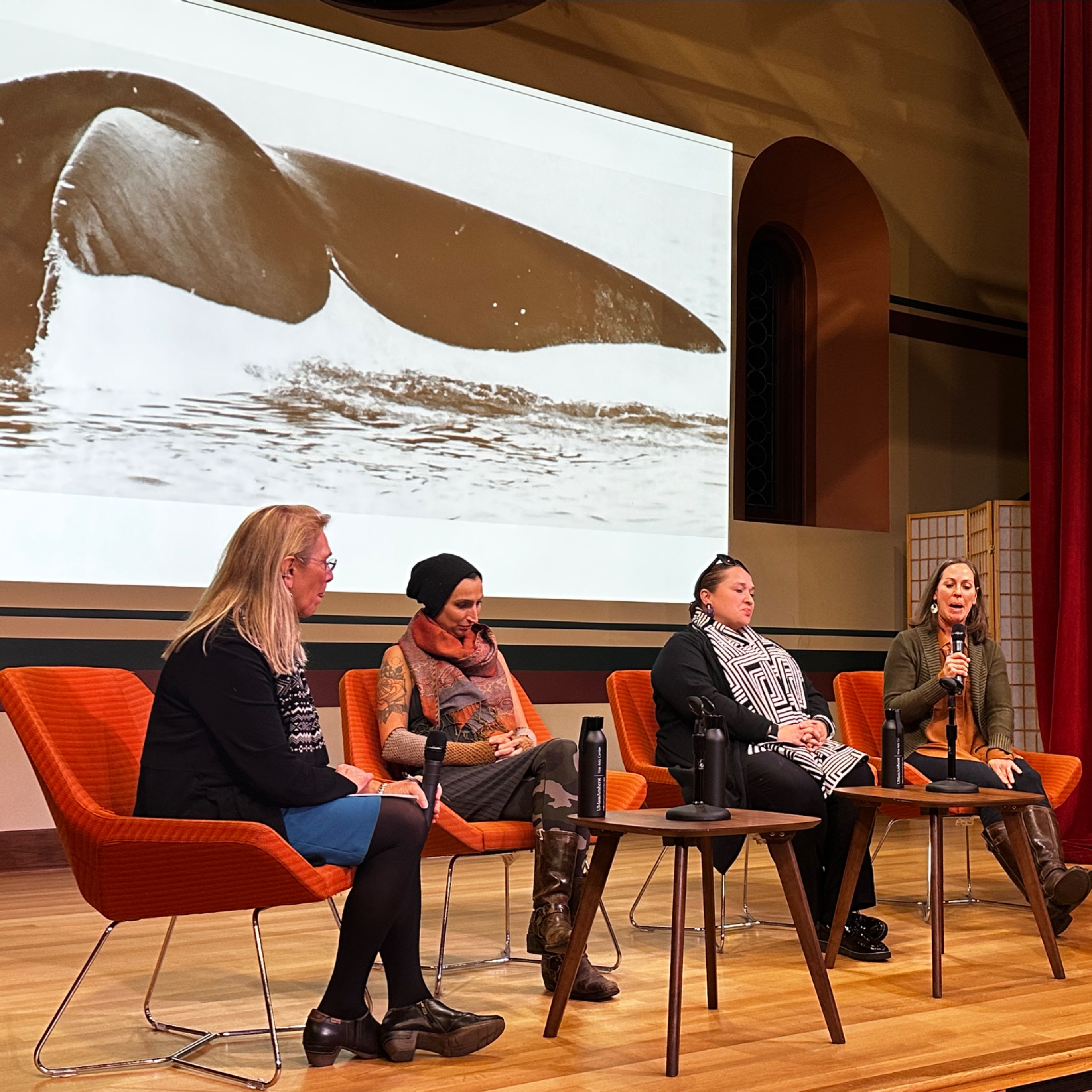
On November 12, Leonard was joined by faculty scientists with whom she collaborated on BREACH: LOGBOOK 24 | STACCATO for the Art and Science Convening. The group discussed their collaborative process that led to the exhibition, and explored how their artistic and scientific practices helped to tell the story of Staccato, the North Atlantic right whale at the heart of the exhibition. Panelists included Leonard; Katherine Doyle, staff in the biology department and vertebrate collections manager for the UMass Natural History Collections; Michelle Staudinger, adjunct faculty in the Department of Environmental Conservation and associate faculty at the University of Maine’s School of Marine Sciences; and Amy Teffer, a UMass postdoctoral researcher for the National Climate Adaptation Science Center.
“This is a species that we will probably see go extinct in our lifetime or in our children’s lifetime. And that’s really incredibly powerful to think that we caused that,” said Michelle Staudinger, an adjunct faculty in the department of environmental conservation.
The panel spoke to themes of Indigenous connections to nature, the healing power of community, and the role of art and science in addressing environmental issues.
“As an artist, you get to kind of do whatever you want,” said Leonard. “But as a scientist, you’ve got to stay in this protocol and permission zone. ... I acknowledge the frameworks that you all have to work in and how there might not be the same shared space of freedom to pose crazy questions or to navigate in the ways that your heart would like you to with the time and support systems that you have.”
